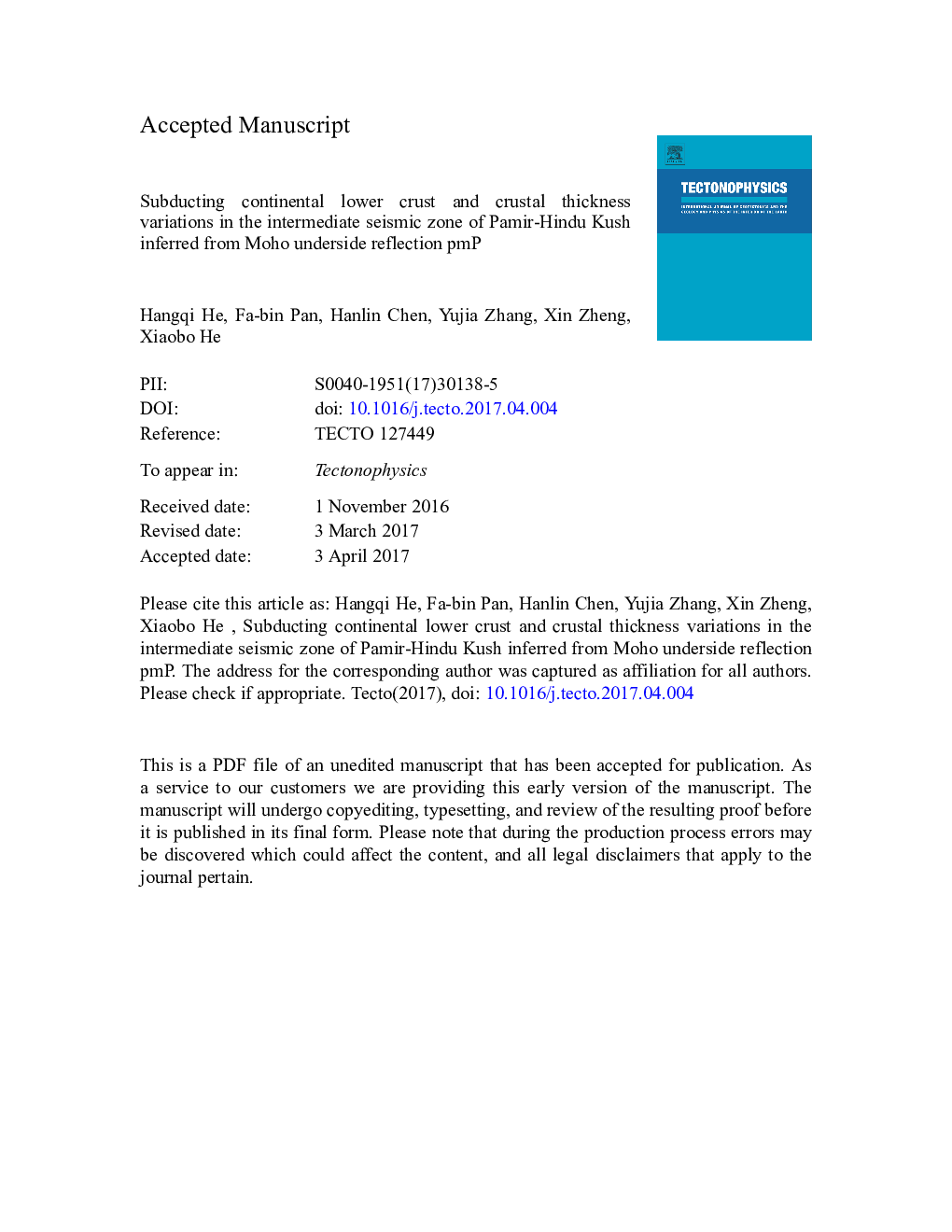| Article ID | Journal | Published Year | Pages | File Type |
|---|---|---|---|---|
| 8908896 | Tectonophysics | 2017 | 28 Pages |
Abstract
The Pamir-Hindu Kush region is an orogenic belt which formed as a result of recent continental collision between the Indian and Eurasian Plates. A comprehensive understanding of the tectonic history of this region has been hampered due to limited seismological investigations. In this study, we use the Moho underside reflection pmP phase to constrain crustal thickness variations in the intermediate-depth seismic zone (36-37°N, 69-72°E). The seismic events characterized by focal depth deeper than 100 km and magnitude > 5.8 (Mw) were used. The crustal thickness was determined by identifying the depth phase pP and the Moho underside reflection pmP. The measured thickness varies spatially from 58.1 to 76.2 km, with uncertainties most likely resulting from deviation of the average P-wave velocities (~ 6.21 km/s with a deviation of 0.22 km/s) in the crust. The strong Moho depth variations imply a large structural deformation of the crust, which reflects a complex collision-related mountain building history. We also detected two strong reflections from deep interfaces down to ~ 97 km underneath the southernmost Pamir. Based on our direct observations and waveform modeling, we interpret that the two reflections are possibly the manifestations of the underplating subducted Eurasian lower crust in this region. Our observations complement those of other seismic results, including receiver functions from previous studies.
Keywords
Related Topics
Physical Sciences and Engineering
Earth and Planetary Sciences
Earth-Surface Processes
Authors
Hangqi He, Fa-Bin Pan, Hanlin Chen, Yujia Zhang, Xin Zheng, Xiaobo He,
